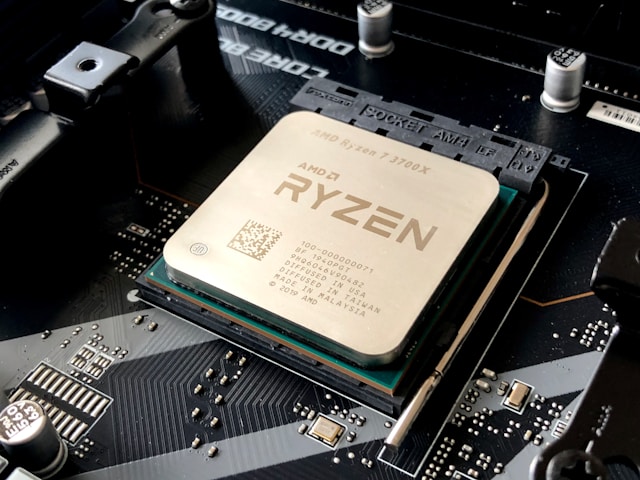
On a rainy April evening, somewhere between a last-ditch boss fight in Hades II and a reckless dash through the wilds of Pacific Drive, I found myself grinning in that way only a truly unpredictable game session can provoke. Not from a photorealistic cutscene or a perfectly rendered particle effect, but from a messy, unscripted moment: A rogue NPC, a random lightning strike, an outcome I hadn’t foreseen. And I realized—these were the kind of stories I used to only get from quirky, small-team indies. So why did this feel so… big-budget?
Fast-forward to 2025, and the dividing line between “indie ingenuity” and “AAA open world” has blurred into a shimmering mirage. Big studios are chasing the emergent gameplay magic that indies have wielded for years, baking chaos and surprise into the biggest games on earth. The result? The most exhilarating—and polarizing—era of gaming in recent memory.
The Age of the “Blockbuster Indie”
It wasn’t so long ago that “AAA” was shorthand for safe bets: franchise sequels, lavish worlds, and the kind of handholding that guided you from plot point to plot point like a theme park ride. Meanwhile, indies—scrappy, unpredictable—reigned as the spiritual home of experimentation, from Slay the Spire’s roguelite decks to the fever-dream structure of Outer Wilds. But something’s changed. The hunger for fresh experiences, and the commercial success of “small games with big ideas,” has forced a rethink at the top.
In 2023, Baldur’s Gate 3 crashed through the Steam charts like a dragon with a grudge—6.2 million copies sold by the end of that year (Larian Studios, 2023)—not just by virtue of its D&D pedigree, but because it let players break the script, topple the DM’s table, and carve out wildly unique stories. Palworld, the “Pokémon-with-guns” upstart, racked up over 25 million players in its first month (Pocketpair, 2024), largely thanks to an ecosystem where chaos—sometimes literal, sometimes hilarious—could unfold with zero warning.
What’s striking isn’t just the numbers, but how quickly this ethos has jumped the fence to AAA territory.
Big Studios Court the Unpredictable
Cue the latest crop of big-budget releases: In Dragon’s Dogma 2 (March 2024), a simple fetch quest might end with a griffin snatching your sidekick into the clouds. In Star Wars Outlaws (Ubisoft, 2025), random bounty hunters interrupt your carefully planned heist mid-mission, forcing improvisation. These aren’t just happy accidents; they’re meticulously engineered systems designed to let players surprise even the designers themselves.
Katsuhiro Hirabayashi, a lead developer on Dragon’s Dogma 2, put it bluntly in an interview with IGN: “If you always know what will happen, it’s not an adventure anymore. We want players to tell their own stories—even if that story is ‘my horse kicked me off a cliff.’” (IGN, March 2024).
What’s driving this shift? Partly, it’s market pressure. The average gamer now owns both Elden Ring and Vampire Survivors, and expects the wow-factor of blockbusters with the risk-taking of indies. But it’s also about what players value: Games are no longer just content to be consumed; they’re engines for self-expression, playgrounds for what-ifs. As social platforms amplify player-created content—think of the tidal wave of “you won’t believe this happened” TikToks—developers are incentivized to cede some control and let the community fill in the blanks.
Not Just Chaos: The Method Behind Emergent Madness
But here’s where it gets interesting. Emergent gameplay isn’t simply a matter of tossing a bunch of physics objects into a map and hoping for YouTube gold. It’s a careful, sometimes maddening art. The best examples—Hades II’s interlocking god boons, Dragon’s Dogma 2’s pawn chatter and AI—rely on finely-tuned rules that yield surprising outcomes, but never pure randomness.
The risk, as AAA games have discovered, is coherence. Too much freedom, and the experience falls apart; too little, and it’s a glorified cutscene. Ubisoft Massive’s creative director, Julian Gerighty, acknowledged this tightrope while promoting Star Wars Outlaws: “Our biggest challenge was making sure player-driven events didn’t undermine the narrative stakes. It’s a balancing act, and we’re still learning.” (Game Informer, May 2025).
And yes, sometimes the magic misfires. Look at the launch of Skull and Bones (2024): Promised as a “living pirate world,” it drifted into chaos-for-chaos’-sake, its systems so loose that players felt aimless rather than empowered (and the player count reflected that, plummeting to under 300,000 by Q2—Ubisoft, 2024).
When Experimentation Meets Expectations
This trend isn’t without tension. Diehard fans of tightly scripted, story-driven experiences sometimes bristle at the growing unpredictability. “I just want my hero’s journey—not a series of slapstick accidents,” one Redditor lamented on r/games after an Outlaws preview dropped. There’s a real question here: Does an abundance of possible outcomes water down the emotional stakes of a carefully crafted narrative?
On the flip side, some indies are getting more “AAA” in spirit. Compare Hades II’s production values—fully-voiced dialogue, animated cutscenes, orchestral soundtrack—to its predecessor. The line between “small” and “big” is as much about philosophy as budget.
A Two-Way Street for Devs and Players
Still, for every player frustrated by a failed quest chain, there are thousands who thrive on the unexpected. The rise of games-as-platforms means a single purchase can yield months of replay value—not from DLC drops, but from player-driven discovery. It’s why Palworld can feel endless even with a modest main campaign, and why streamers flock to games with “what will happen next?” energy.
For developers, it’s a blessing and a curse. Emergent systems can be buggy, unpredictable, and fiendishly hard to QA. But when they click, they generate viral moments, organic engagement, and—crucially—fandoms that feel true ownership of the stories they create.
What It Means for You—And the Future
So, what’s the practical upshot for those of us with controllers in hand? Expect your games—especially the blockbusters—to get weirder, riskier, and more personal. If you’re tired of feeling like a tourist in someone else’s narrative, now’s the time to seek out games with robust systems, unscripted moments, and genuine player agency. Conversely, if you crave a more “curated” ride, don’t sleep on indies: many now deliver the polish and narrative heft once exclusive to the majors.
For creators, this is a golden age for cross-pollination. Big studios are hiring rogue talent from the indie scene (see the design team behind Pacific Drive, scooped up by multiple AAA recruiters after launch—Polygon, April 2025). Indies, flush with surprise hits, are expanding ambition without losing their experimental DNA. The result? A scene where the next big innovation could come from anywhere, and everyone’s borrowing from everyone else.
Don’t Blink—The Soul of Gaming Is Up for Grabs
There’s something deeply thrilling about this moment in gaming culture. The boundaries are less walls, more speed bumps. AAA games are no longer just about spectacle; indies aren’t just about quirk. They’re all vying for our attention by embracing the messy, beautiful chaos that makes play feel alive.
So next time you boot up a blockbuster and find yourself derailed by a tornado, a talking cat, or an NPC with a death wish, ask yourself: Is this the new normal? Or just the latest phase before the pendulum swings back? One thing’s for sure—if the past 18 months are any sign, the games we play are only going to get stranger, and the line between indie and AAA, ever more delightfully blurred.
Conclusion
In 2025, AAA games are borrowing indie tricks—emergent gameplay, chaos, and player-driven moments—while indies up their production game. The boundaries are blurring, and everyone wins (well, unless your horse kicks you off a cliff).
Which side of the chaos vs. control debate do you fall on? Which 2025 release has you hyped? Sound off below!


